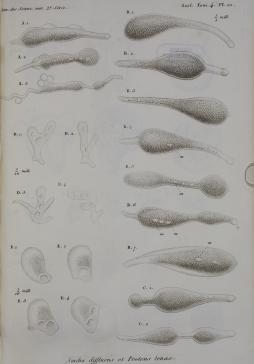Biological motion has recently become a key concept guiding life-science research on the basic functions of the organism. But investigations into the movements of the living world have a long history, from Aristotle’s “animal soul” to contemporary molecular motors.
Based on the research for the forthcoming book Biological Motion: A History of Life (Zone Books, 2024), this project expands upon how, across the centuries, the locus of animate movement migrated from animal to matter, from the organized to the inchoate, from the organs of locomotion to the contractility of all living matter—and thereby redrew the frontiers between plant and animal, dead and alive.
Following the descent of motion research down ever deeper into the organism’s interior, the project portrays the unstoppable ascent of motion up to the status of the most important explanation of the inner workings of life, whether in reproduction or in protein action. It explores the premodern experience of motion through body and soul and the circulation of the knowledge of motion through practices, visual technologies, and theories of perception.

